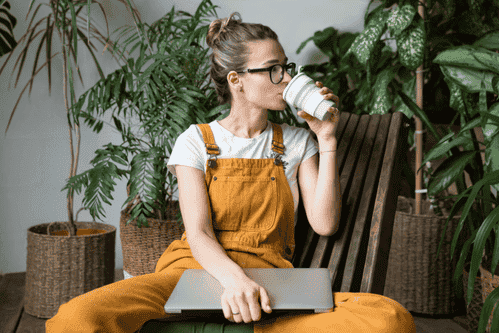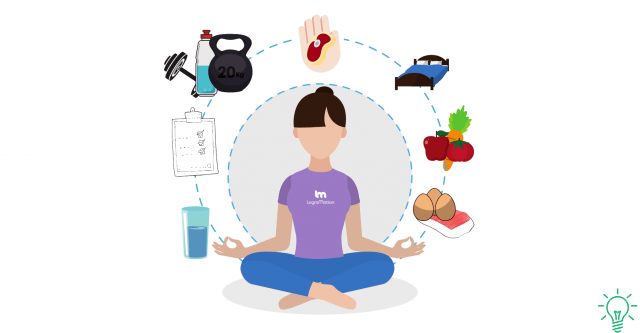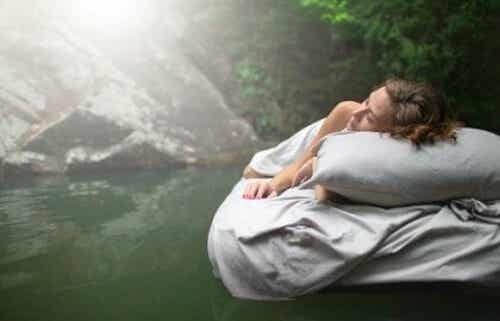Not all of us have terraces, gardens or gym equipment. Much of the population is confined to small apartments or even rooms. In these cases, there are some important tips to consider.

Written and verified by the psychologist GetPersonalGrowth.
Last update: 15 November 2021
Quarantine in small spaces, in apartments of a few square meters, is a reality that goes almost completely unnoticed. Cramped environments in which time passes more slowly and sometimes in difficult conditions. For example, we must not forget those who live in a room, such as students or workers who share the same apartment.
One thing is certain: the psychological and health impact of this Covid-19 pandemic makes it a level. We can all contract Coronavirus and we all experience anxiety and uncertainty about the future.
Anyway, each of us perceives and experiences these events starting from our own economic conditions. Each mind, each face and gaze contemplates the evolution of these days from a different window. From timid openings set in the small houses of our cities. To houses overlooking narrow alleys, barely illuminated by sunlight.
On the other hand, there are those who have the possibility to have breakfast on the balcony or on a small terrace. While still others, they can relax under a warm sun in the garden or even in the countryside. As you can imagine, for a family, quarantine in small spaces has a very different impact than those who can afford to read under a tree.
Quarantine in small spaces: life in a small apartment
The confinement in small apartments means, in many cases, living in spaces of just over 50 square meters (or even less). Obviously this will have a different impact on a family than on a single. In most cases, however, we are talking about couples with children, including pets.
If life in these conditions was already complicated before the quarantine, now it is even more so. In fact, in general, work and daily commitments keep us away from home for many hours. Work, shopping, school… Social life outside is compensated by moments of intimacy at home, which give us a certain balance and make us feel good.
On the other hand, quarantine in small spaces can produce greater difficulties for young people who share the same apartment. Life between the walls of a room can be psychologically exhausting. Likewise, coexistence problems can make sharing more or less difficult.
Having such a clear picture of the problem available, what strategies could we follow to improve the quality of life in such conditions?
Small spaces, different activities
In case you spend the quarantine in a small space it is important to take into consideration an important precaution: diversify the spaces as much as possible and not carry out all the activities in one place. What do we mean by that? Let's see some examples:
- Do not eat your meals on the sofa, in bed or in the place where you watch TV or relax. Always do it at the table.
- If you work from home, don't run your business in the same place you eat. If possible, put your desk in a different environment (preferably near a window)
The main goal is: to distract the mind. If we eat, work and watch TV in one place, the feeling of stress, fatigue and frustration will be far greater.
A small space must allow you to experience moments of privacy
We all need moments of solitude. An hour or two a day to be alone with oneself is essential for every member of the family. Whenever possible, therefore, you should have the opportunity to get away from others and stay in your own room, on the balcony or terrace, reading, listening to music, exercising, etc.
Organize time for a better quality of life
Small-space quarantine also requires habits-based strategies. Beyond what one might think, the management of time, activities, moments of leisure, work, physical exercise, is of great help for psychological health.
It doesn't matter if we are more or less active, if we prefer to spend time doing house cleaning or yoga, reading or drawing. Frequently changing activities is actually a highly beneficial stimulus.
Quarantine in confined spaces: the sun and vitamin D
One of the biggest problems with quarantine in a small apartment is poor exposure to sunlight. Studies such as the one conducted at the University of California, Berkeley, by Drs. William Grant and Henry Laore, state that vitamin D deficiency can increase the risk of getting infections.
A weakened immune system, deprived of this and other vitamins, is more exposed to risk. Whenever possible, therefore, you should be exposed to the sun for 15-30 minutes a day. Take advantage of windows, balconies and terraces. By doing so, it will be possible to increase vitamin D levels.
Creativity: small spaces full of magic
Even small spaces have great potential. We can actually take advantage of this period to make some small changes.
The goal is to bring as much light into the house as possible with the most suitable resources. In addition to this, with a little ingenuity, desire and creativity we can create corners with charm and originality both for us and for our children.
For example, with a simple sheet we can create an Indian tent to give our children moments of fun. The charm of a house, an apartment or a space in general, however small, is always given by its inhabitants.
The concept is that of take care of emotions, motivation, health and hope to make the days to come even lighter.


























